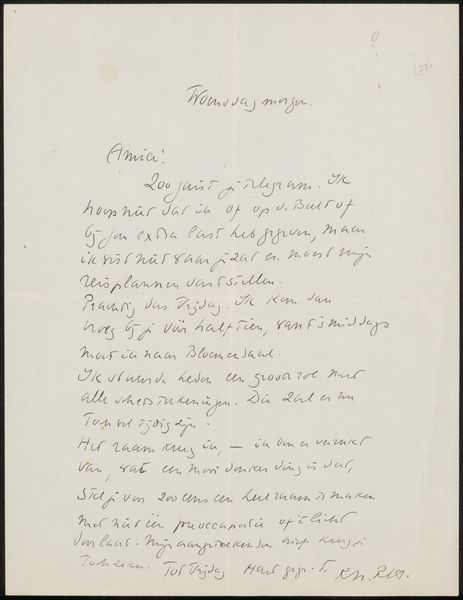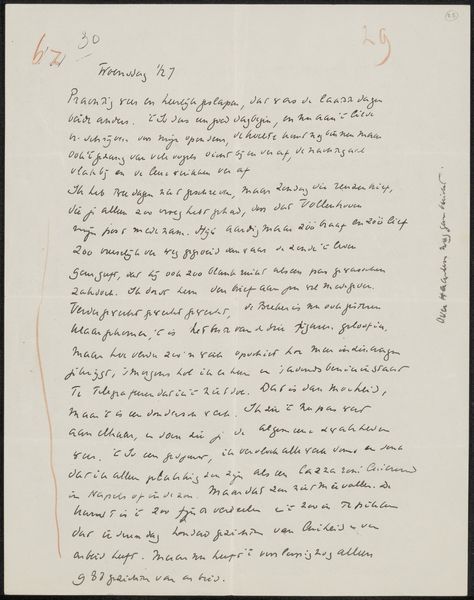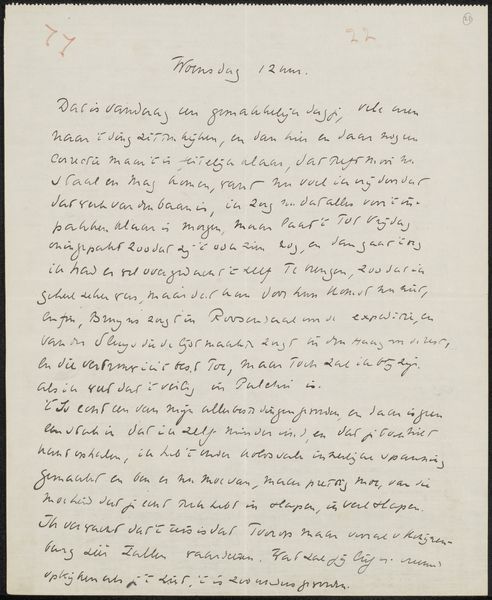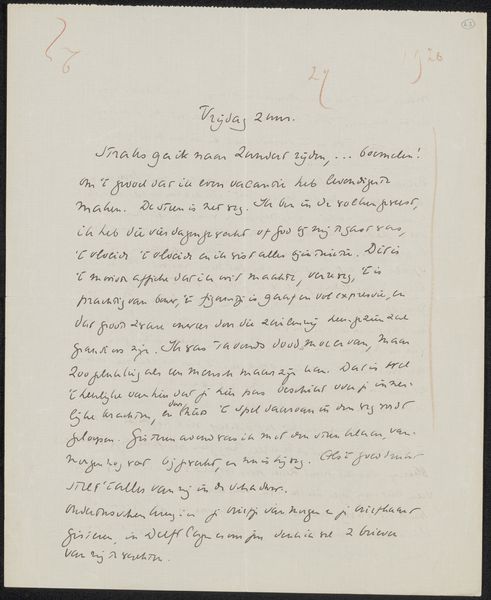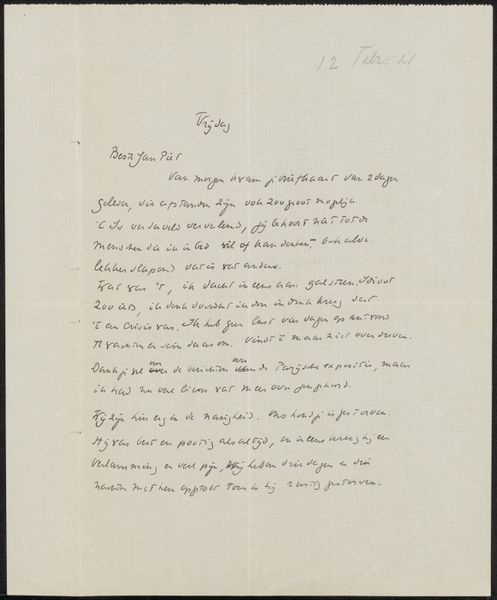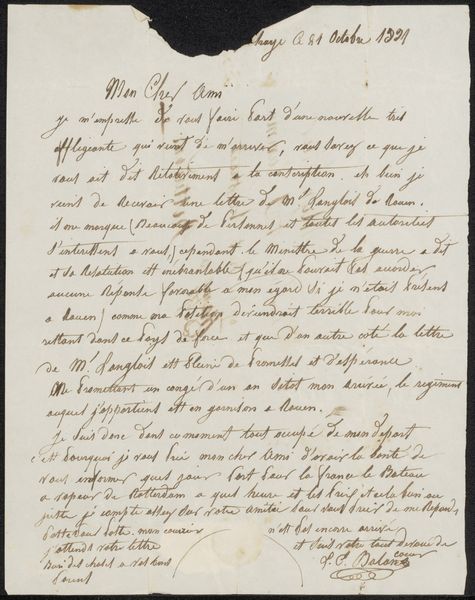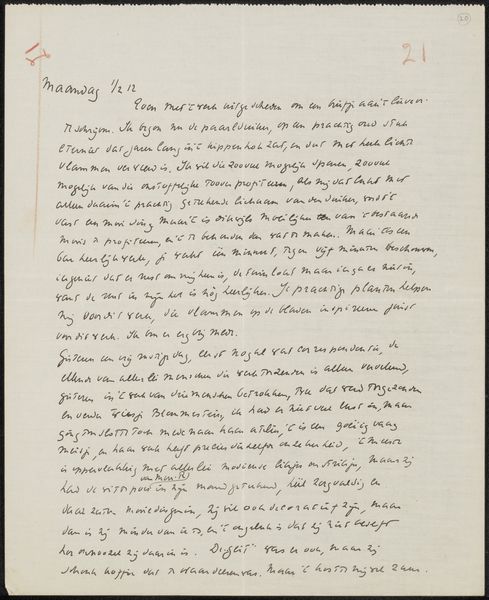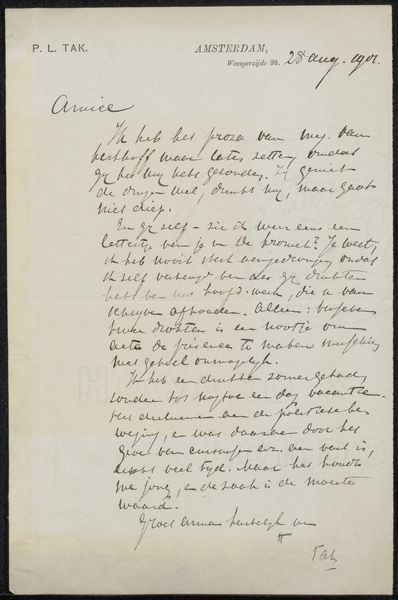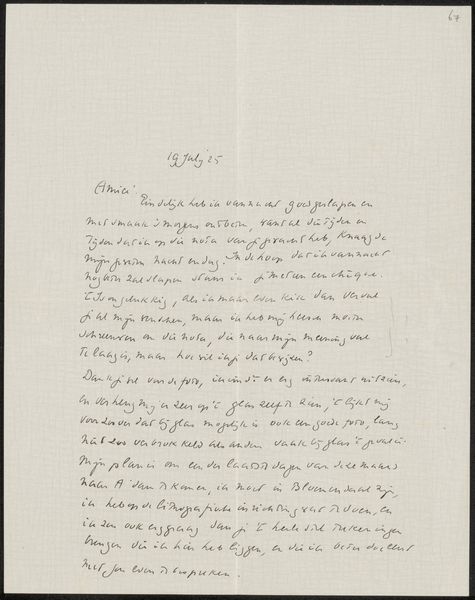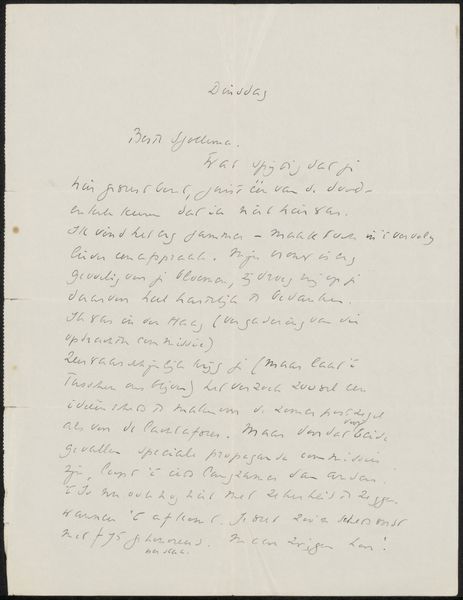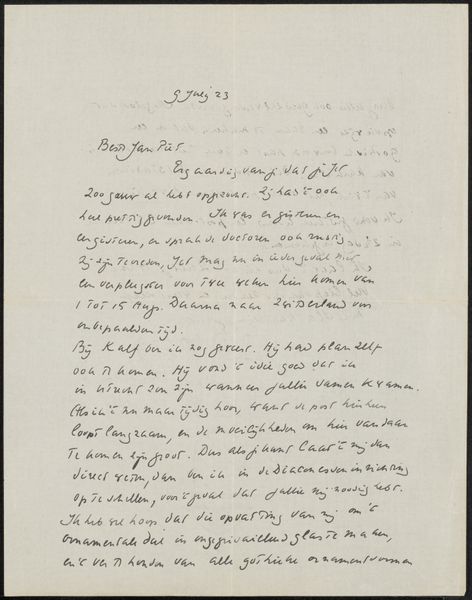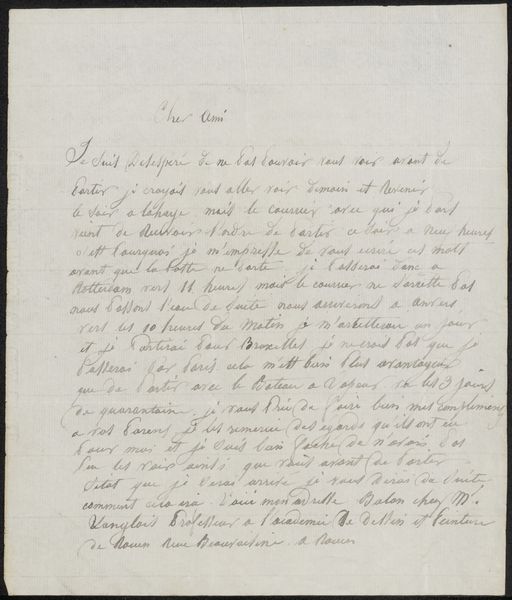
Brief aan Ina van Eibergen Santhagens-Waller c. 1878 - 1938
0:00
0:00
drawing, paper, ink
#
drawing
#
paper
#
ink
Copyright: Rijks Museum: Open Domain
Curator: Here we have “Brief aan Ina van Eibergen Santhagens-Waller,” or “Letter to Ina van Eibergen Santhagens-Waller,” a drawing made with ink on paper, likely created sometime between 1878 and 1938 by Richard Nicolaüs Roland Holst. It is currently held in the collection of the Rijksmuseum. Editor: It looks like a hasty missive, a script dashed off on the spur of the moment. There’s a raw, unedited energy to the page that speaks volumes before you even attempt to decipher the handwriting. Curator: The letter offers a glimpse into the artistic and social circles of the late 19th and early 20th centuries. Ina van Eibergen Santhagens-Waller was part of the Dutch intellectual elite. Holst's letters to her highlight his role in this network, providing insights into his creative process and social connections. Editor: Tell me, looking beyond the addressee's pedigree, don’t you notice how the lines almost seem to bleed into one another? There's a blurring that seems almost intentional, subverting any sense of rigid structure, much like the artist's ideas themselves. Curator: Indeed. This visual blurring perhaps echoes a sentiment of introspection during periods of change, where conventional ideas and societal structures were often questioned, and Roland Holst, was actively questioning societal expectations through his artistic lens. The very act of choosing paper and ink also ties back to an age-old tradition, almost as a conscious decision to ground his turbulent thoughts in established mediums. Editor: Right. But by employing these age-old mediums, he simultaneously pushes boundaries in terms of textual spatial relationship—observe the way his lines wander—dipping and rising in a seemingly organic manner, creating its rhythm outside standard rules. It reminds me of Abstract Expressionist gestures that will come later, anticipating automatic writing and art-making. Curator: Absolutely. Through these pieces we begin to form our historical narrative, and understanding Holst's creative methods grants valuable context when assessing the piece in later analyses. Editor: This drawing has more under the surface; it shows what it feels like to express words on paper and captures how our hands respond in trying to externalize an intimate sentiment into something that's material.
Comments
No comments
Be the first to comment and join the conversation on the ultimate creative platform.
